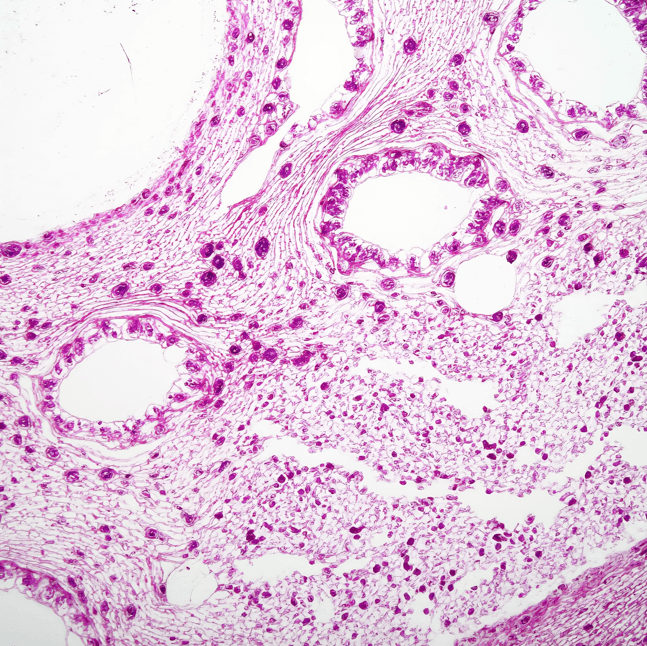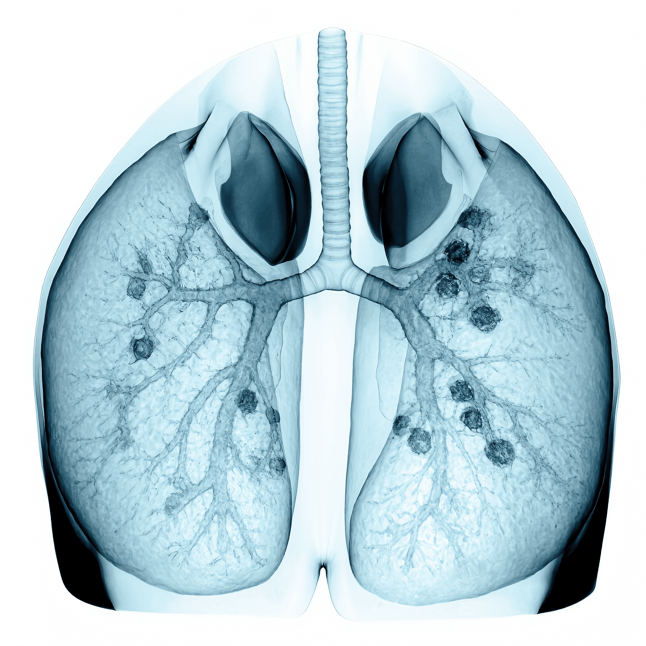Book Appointment Now
Understanding Kaposi Sarcoma

Kaposi Sarcoma Guide
Introduction
Kaposi sarcoma (KS) is a type of cancer that originates in the lining of blood and lymph vessels. It is strongly linked to infection by the human herpesvirus 8 (HHV-8), also known as Kaposi sarcoma-associated herpesvirus (KSHV). KS most commonly manifests as purplish, reddish, or brown lesions on the skin (often on the legs, face, or mouth), but it may also involve internal organs such as the gastrointestinal tract and lungs. This disease is frequently seen in individuals with weakened immune systems, notably those with HIV/AIDS or those on immunosuppressive therapy after organ transplantation.
Types of Kaposi Sarcoma
Although KS is often mentioned as one disease, it is classified into several distinct types based on patient population and underlying risk factors:
- Epidemic (AIDS-Related) Kaposi Sarcoma: The most common form, occurring in HIV-positive individuals with compromised immune systems.
- Classic Kaposi Sarcoma: Typically found in older men of Mediterranean or Eastern European descent.
- Endemic (African) Kaposi Sarcoma: Prevalent in Sub-Saharan Africa, occurring even in HIV-negative individuals.
- Iatrogenic (Transplant-Related) Kaposi Sarcoma: Develops in patients on long-term immunosuppressive drugs after organ transplantation.
Statistics
- Incidence: In the United States, KS is most frequently seen in individuals with uncontrolled HIV/AIDS. The widespread use of antiretroviral therapy (ART) has significantly lowered the incidence of AIDS-related KS.
- Geographic Variations: Globally, KS remains more common in Sub-Saharan Africa due to higher rates of HIV infection and limited access to antiretroviral therapy.
- Survival Rates: Prognosis varies based on the extent of disease and immune status. Five-year survival rates can range from approximately 70% for localized disease to around 30% for advanced or disseminated disease.
Medical Illustrations
Microscopic image of Kaposi sarcoma tissue – irregular vascular channels, spindle-shaped cells, and extravasated red blood cells:

CT scan of the chest showing multiple bilateral nodular opacities suggestive of pulmonary Kaposi sarcoma

Risk Factors and Prevention
a. Known Risk Factors
- HV-8 Infection: The presence of Kaposi sarcoma-associated herpesvirus is essential for KS development.
- HIV/AIDS: A severely compromised immune system greatly increases the likelihood of KS.
- Immunosuppression: Organ transplant recipients on immunosuppressive drugs are at heightened risk.
- Geographic and Ethnic Background: Higher prevalence in individuals of Sub-Saharan African or Mediterranean descent.
- Gender: KS is more frequently diagnosed in men than in women.
b. Prevention
- HIV Management: Consistent use of effective antiretroviral therapy (ART) to maintain immune health.
- Immunosuppressive Therapy Management: Tailoring or adjusting drug regimens in transplant patients to minimize excessive immunosuppression.
- Safe Sex Practices: Reducing the risk of HIV and other infections through condom use and routine testing.
- Early Screening: Regular medical check-ups for high-risk individuals (e.g., HIV-positive patients and transplant recipients).
Screening
Currently, there is no formal screening program for Kaposi sarcoma in the general population. In high-risk groups (such as those with HIV or transplant recipients), regular medical evaluations are critical:
- Physical Examinations: Checking for skin lesions or lymphadenopathy during routine follow-up visits.
- Blood Tests: Periodically monitoring immune function (CD4 count in HIV-positive individuals).
- Clinical Vigilance: Ensuring that any new or suspicious lesions are promptly biopsied.
Symptoms and Early Warning Signs
Symptoms of Kaposi sarcoma differ depending on the type and extent of the disease. Common early signs include:
- Skin Lesions: Purplish, reddish, or brown patches that may be flat or raised, often appearing on the legs, face, or inside the mouth.
- Lymphedema: Swelling in the limbs due to lymphatic involvement.
- Gastrointestinal Symptoms: Possible bleeding or obstruction, if lesions are present in the digestive tract.
- Respiratory Symptoms: Cough or shortness of breath when the lungs or airways are involved.
Individuals with persistent or worsening lesions, especially those in high-risk categories, should seek medical evaluation promptly.
Diagnosis Kaposi Sarcoma
Diagnosing Kaposi sarcoma requires a combination of clinical assessment and diagnostic tests:
- Physical Examination: Identification of characteristic lesions on the skin or mucous membranes.
- Biopsy: Histopathological analysis of tissue samples confirms KS.
- Imaging: CT scans, X-rays, or endoscopy to check for organ involvement.
- HIV Testing: Mandatory in patients not previously tested.
- HHV-8 Testing: May be performed to detect the presence of Kaposi sarcoma-associated herpesvirus.
Stages
Types of Treatment
Overview of Treatment Modalities
Treatment selection depends on the type of KS, the extent of disease, and the patient’s immune status:
- Antiretroviral Therapy (ART):
- Primary for HIV-positive patients to control HIV replication and restore immune function. This alone can sometimes cause KS lesions to regress.
- Local Therapies:
- Cryotherapy: Freezing small, localized lesions with liquid nitrogen.
- Radiation Therapy: Targeting specific areas to reduce lesion size or alleviate symptoms.
- Surgical Excision: Removing solitary lesions to improve cosmesis or relieve symptoms.
- Systemic Therapies:
- Chemotherapy: Often used in advanced or widespread disease; liposomal doxorubicin is frequently employed.
- Immunotherapy: Aims to enhance the immune response against KS lesions; may be combined with other treatments.
- Adjustment of Immunosuppressants: In transplant-related KS, modifying or reducing immunosuppressive medication can help control tumor growth.
Comparing Treatments
| Treatment | Mechanism | Side Effects | Efficacy (Outcome) | Study/Trial |
|---|---|---|---|---|
| Antiretroviral Therapy (ART) | Restores immune function, reducing KS progression | Mild GI symptoms | Highly effective in HIV-positive cases, often leading to lesion regression | Brown et al., 2023 |
| Cryotherapy | Freezes lesions to induce cell death | Local pain, irritation | Effective for small, localized lesions | Smith et al., 2021 |
| Chemotherapy | Targets rapidly dividing cells | Nausea, fatigue | Often used for advanced KS; can achieve good response rates | Lee et al., 2020 |
| Radiation Therapy | Shrinks or eliminates tumors via ionizing radiation | Skin irritation, fatigue | Particularly effective for localized or symptomatic lesions | Carter et al., 2022 |
Living with Kaposi Sarcoma
Living with Kaposi sarcoma involves both physical and psychosocial considerations:
- Immunologic Health: Adherence to ART (for HIV-positive individuals) or careful monitoring of immunosuppressants (for transplant recipients).
- Skin Care: Protecting affected areas to reduce the risk of secondary infections.
- Nutritional Support: Consulting with a nutritionist to manage weight loss, ensure adequate intake, and address GI involvement.
- Emotional and Psychological Support: Counseling, support groups, or online communities can help cope with stress, anxiety, and depression.
- Regular Check-Ups: Continued surveillance to detect any new lesions or disease progression.
Additional Resources
- American Cancer Society
- Kaposi Sarcoma Foundation
- National Cancer Institute
Key Takeaways
- Kaposi sarcoma is a rare vascular cancer strongly associated with HHV-8 infection and immunosuppression.
- Early detection and diagnosis are crucial, especially in high-risk groups (HIV-positive individuals, transplant recipients).
- Treatment options range from local interventions to systemic therapies, guided by disease extent and immune status.
- Restoring or maintaining immune function (e.g., via ART) can significantly improve outcomes.
- Comprehensive care—including medical, nutritional, and psychological support—is essential for quality of life.
Final Recommendations
- Seek Early Evaluation: Any persistent or unusual skin lesions, particularly among high-risk groups, warrant prompt medical attention.
- Optimize Immune Health: For HIV-positive patients, strict adherence to ART is key. Transplant patients may benefit from close coordination with their transplant team to fine-tune immunosuppressive regimens.
- Explore Treatment Options: Discuss local and systemic therapies with a healthcare provider, including potential participation in clinical trials.
- Ongoing Monitoring: Regular follow-up is necessary to detect new lesions, manage side effects, and maintain overall well-being.
Disclaimer
The information provided in this article is intended for general informational purposes only and should not be construed as medical advice. While every effort has been made to ensure the accuracy of the information presented, it is not a substitute for professional medical guidance, diagnosis, or treatment. Always consult a qualified healthcare provider with any questions you may have regarding a medical condition, including Kaposi Sarcoma. Do not disregard or delay seeking professional medical advice based on information found in this article. The authors and publishers are not responsible for any consequences resulting from the use of the information provided.
